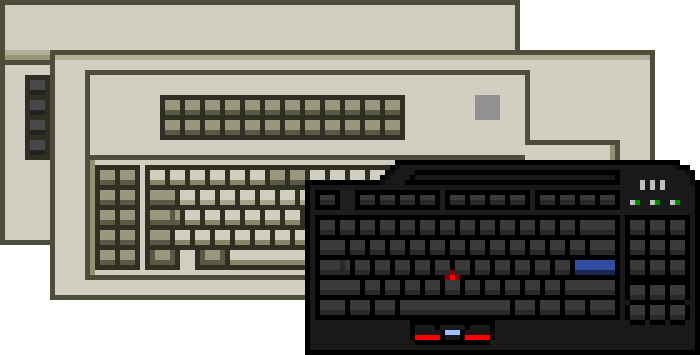P/N 4941871 - Model B Keyboard Details & Specs
Provided by the ASK Keyboard Part Number Database
IBM 3276/3278 Display Station 75-key Typewriter Keyboard
| CSA part numbers | 1650682 |
|---|---|
| Type | Model B 3251/3276/3278/3279/8775 75-key Base Keyboard (327X-75 type Model B) |
| Known host systems | IBM 3276 Control Unit Display Station (IBM 3270 family) IBM 3278 Display Station (IBM 3270 family) |
| OEMs or ODMs | IBM |
| Keyswitches | IBM beam springs |
| Earliest appearance | |
| Original keycaps | SAN with double-shot legends (w/ possible pad-printed front-printed legends) |
| Cover colour | Pearl White |
| Branding | None |
| Feet | None |
| Connection | Black straightened-style fixed DB-25 cable |
| Number of keys | 75 |
| Layout & language | 3270: Base Typewriter U.K. English |
| Accessories & other features | Clicker assembly Guide access panel(s) |
| Additional notes | This version of this type of keyboard lacks a numeric lock |
| Sources | Doc: IBM 3270 Information Display System 3276/3278 Keyboard Assembly Parts Catalog (#S126-0029-0) [source: bitsavers] |
| Related Directory entries | IBM 3251/3276/3278/3279/8775 Display Station 75-key Typewriter Keyboard |
| Data last updated |

